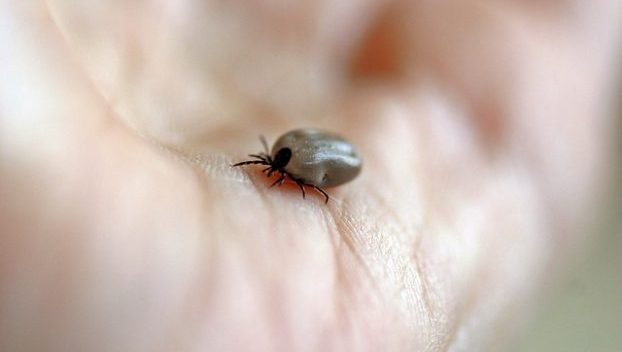Buckingham residents warned about ALT tick
Published 11:45 pm Friday, June 30, 2023
|
Getting your Trinity Audio player ready...
|
The Asian Longhorned tick (ALT), which was first discovered in the United States in 2017 has now been found in 19 states including Virginia. Currently, there are 38 Virginia counties with established ALT populations, including Buckingham. As ALT populations have increased, a concern for the health of livestock in affected areas has increased as well. ALT is a vector for the parasite Theileria orientalis Ikeda which can cause theileriosis in livestock, including cattle.
“When cattle develop theileriosis, signs of anemia, fever, jaundice, difficulty breathing and lethargy can be present,” said Virginia Veterinarian Dr. Charles Broaddus. “As there is no cure, treatment should focus on supportive measures including stress reduction, nutritional supplementation and above all, prevention in the form of tick control.”
Once symptoms of theileriosis manifest, testing is an important step to confirm the presence of Theileria orientalis. Dr. Kevin Lahmers of the Virginia-Maryland College of Veterinary Medicine (VMCVM) has been leading research on this new pathogen, and Virginia Tech Animal Laboratory Services (ViTALS) at VMCVM has developed a PCR test for Theileria orientalis and Anaplasma marginale. This is performed on whole blood in EDTA in live animals but can be run on fresh spleen as well. Samples can be submitted directly to ViTALS vitals.vetmed.vt.edu or through VDACS lab services. Dr. Lahmers can be reached at klahmers@vt.edu or 540-231-4320.
Trending
As there is no approved treatment in the U.S., controlling ALT populations is the best management option. Virginia Cooperative Extension has developed the following methods to manage ALT populations:
- Regularly inspect cattle for ticks. As ALT is very small, a thorough inspection is required.
- During inspections, pay close attention to cattle that appear lethargic or anemic, have low weight, or have patchy hair.
- Inspect all newly purchased cattle before adding to a herd.
- Submit tick samples to your local extension agent for species confirmation.
- Consider using pesticide-impregnated ear-tags.
- Use backrubbers and siderubbers charged with appropriate pesticides in high traffic areas.
- For treatment in areas of high tick concentrations, use direct pour-on treatments.
- Treat all animals in a herd for ticks at the same time.
- Consider keeping pastures mowed shorter.
- Consider keeping cattle out of wooded areas.
- Check any pets or working animals that are in contact with herds.






